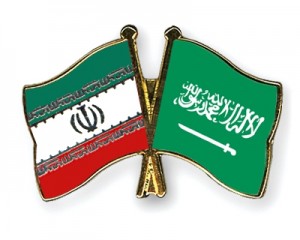The Riyadh Tehran Diplomatic Row: A Recap of the Facts
Tuesday, January 19th, 2016 5:12:07 by modousarr
The rupture of diplomatic relations between one of the most powerful Sunni Muslim countries or some would say the most eminent Sunni country (as the custodian of the two Holy Mosques), Saudi Arabia, and one the most powerful Shiite Muslim countries Iran, undoubtedly has spin- of effects across the wider middle east. The Prospect of an even wider Sunni Shiite sectarian conflict is all too real as a result of the dispute involving the two giants in the region.
To put it all into perspective, one must consider that Saudi-Arabia and Iran, are already involved in several proxy wars across the region, in Syria, Saudi Arabia is funding the Sunni rebel groups while Iran is backing the Assad regime.
This dispute was result of what is seen as a more hawkish power flex of the Saudi leadership under King Salman and his son the deputy crown prince after the execution of an outspoken Shiite religious leader who was a fierce critic of the Saudi Royal Family Sheikh Nimr. Sheikh Nimr was a leader of Arab Spring Inspired protests by Saudi Arabia’s Shia community when he was arrested and convicted of terrorism in 2012.
In response to his execution, Iranian leaders warned of the downfall of the Kingdom in what they termed as “divine revenge” and the destruction of the Saudi embassy in Tehran followed and this only exacerbated the situation.
What followed was a worrying deterioration of relations with Bahrain and Sudan following Saudi Arabia in cutting of ties with Tehran fears of a wider sectarian divide are all too real. The UAE have downgraded its ties with the Saudi Kingdom and Kuwait recalled their ambassador.
Another important aspect of the fallout was the announcement by Saudi Arabia of the formation of a 34 nation alliance just days before the execution. This is generally seen as a move to isolate Iran and Iraq, predominantly Shiite countries, although Saudi Arabia denies that this is the case and claims that this is an effort against ISIS and other terrorist organizations in the Middle East.
Then comes the question, what does all of this mean for Pakistan. Pakistan like most Muslim countries in the Middle East faces the threat of an internal Sunni-Shia split as a result of this diplomatic row and as a result will consider that it is in its interest to stay neutral, which is what Iran would prefer. On the other hand Sunni groups will not necessarily tow the government line if push comes to shove as Saudi Arabia has a strong foothold in Pakistan and has a long history of backing militant Islamist groups in Pakistan.
Another dimension to the whole situation is that it is seen generally as a setback in the prospect of ending the wars in Yemen and Syria. The promise of Saudi Arabia and Iran working together to come to a peaceful settlement in Yemen and Syria have been dashed. This leads to wider problems such as the immigration crisis.
When it’s all said and done, Pakistan must not lose sight of the fact that it plays a central role in this whole debacle, literally. In the sense that Saudi back madrasahs are known to be a hotbed of terrorist ideology and recruitment, reports of Pakistan’s going to fight in the wars in in Syria or to join Isis grow by the day and are well known. But perhaps what is not as well- known and even more disturbing is that there are reports of Iran doing the same recruitment exercises in the villages of Pakistan.
So, Pakistan must realize that it is in danger of being the battleground for another proxy war, between Saudi Arabia and Iran and in Pakistan, the situation is likely to be a bigger conflict than other proxy war fronts like Syria.
Pakistan also has economic interests in keeping friendly relations with Iran, for a steady supply of oil.
Whether Pakistan remains neutral or sides with Saudi Arabia remains to be seen, although the Foreign office has said that Pakistan will not deploy any troops as a result of the Saudi led coalition, it just might be forced to do so.
Short URL: https://www.newspakistan.pk/?p=52301

















